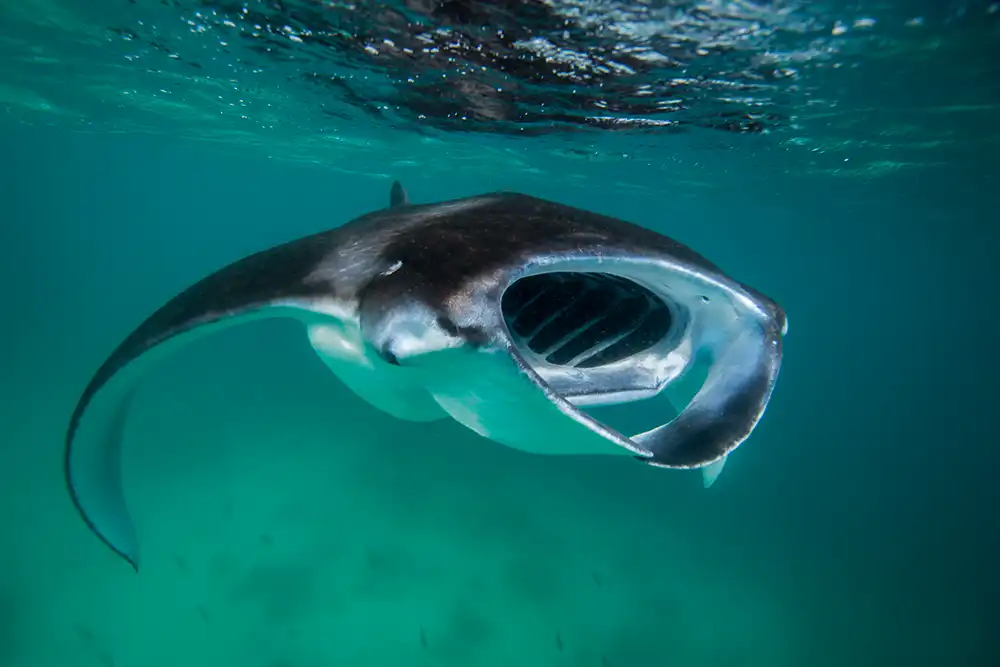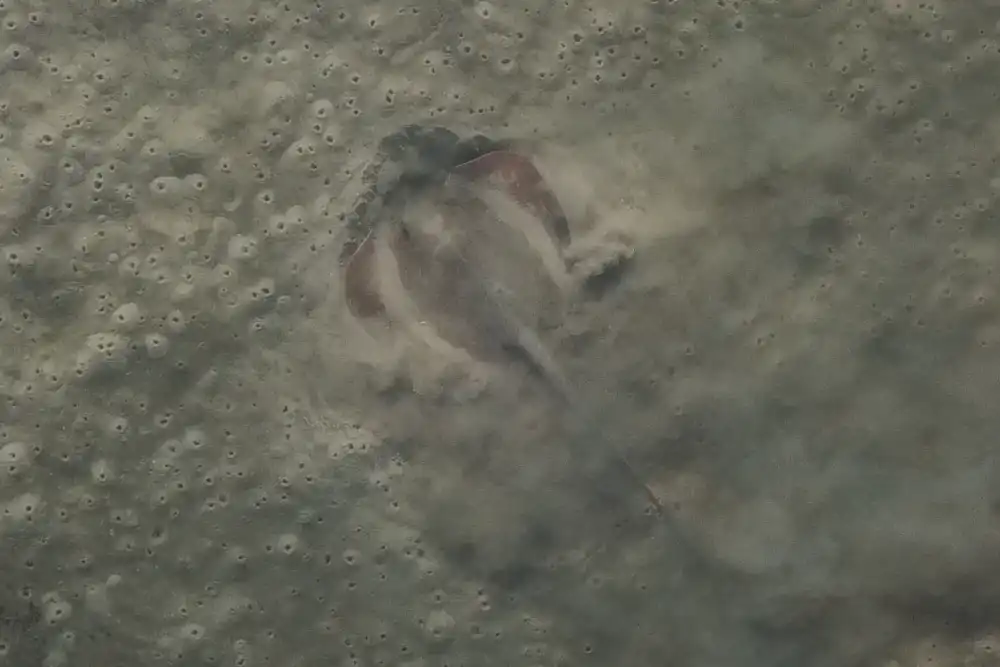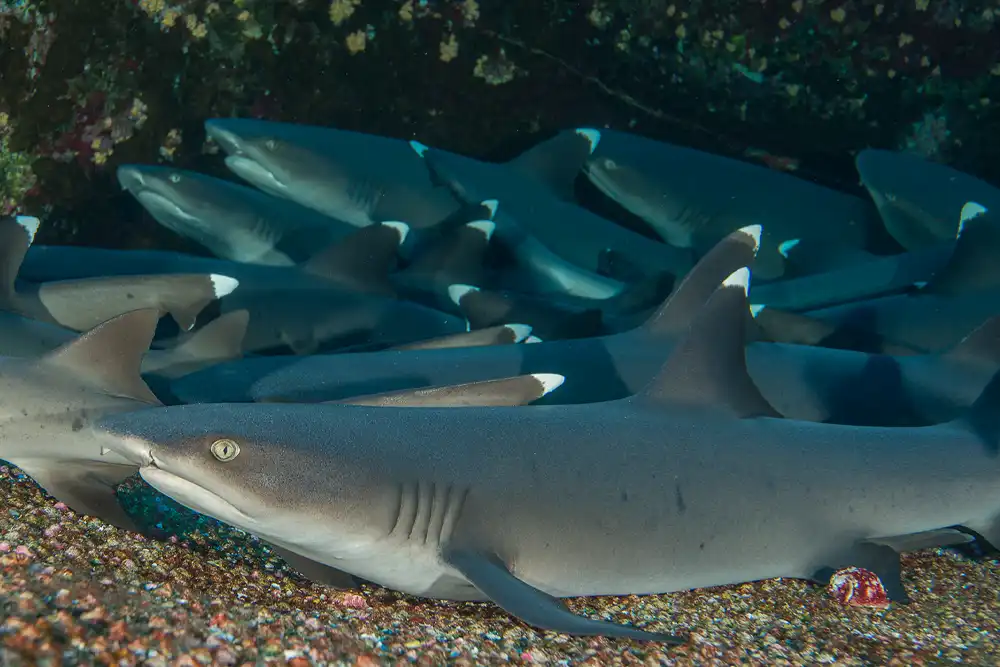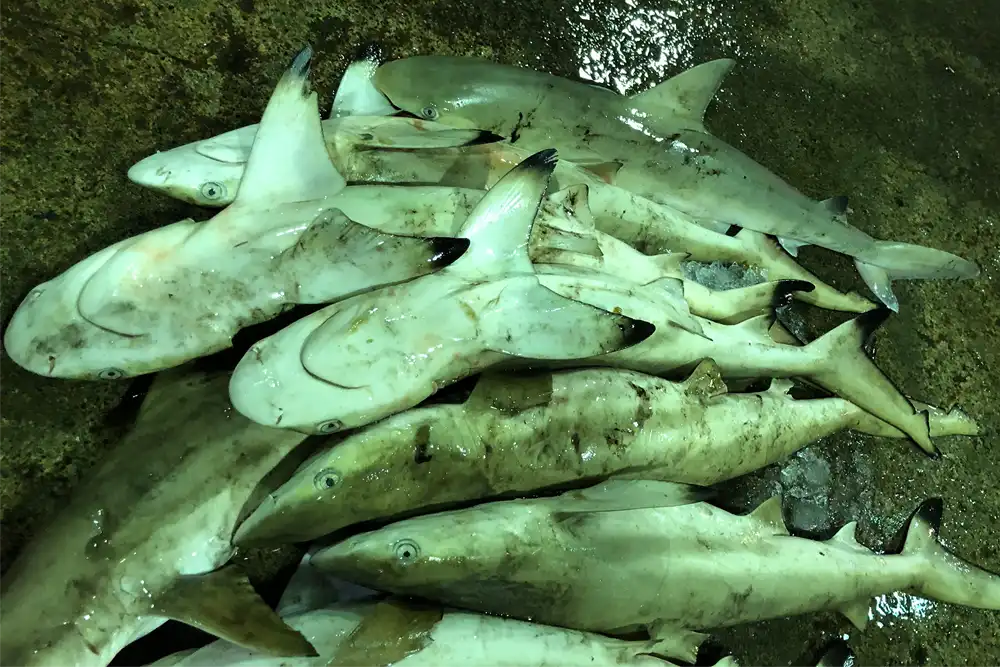[ad_1]

A brand new examine finds that overfishing has brought on populations of sharks, rays and chimaeras to say no by half since 1970.
A brand new examine has proven that populations of sharks, rays and chimaeras have declined by greater than 50 per cent over the past 50 years.
Chondrichtyes – the category of cartilaginous, or chondrichthyan fish – are among the many most historical of jawed animals, showing within the fossil report of the early Silurian interval round 439 million years in the past – 20 million years sooner than trendy bony fish.
At the moment, greater than 1,199 species of sharks, rays and chimaeras inhabit virtually each marine atmosphere, however are more and more threatened by human actions, particularly overfishing but additionally via air pollution and local weather change.
A 2021 re-assessment of the IUCN Crimson Listing standing of chondrichthyan fish discovered that one-third of all sharks, rays and chimaeras have been liable to extinction; a determine which the brand new examine’s authors counsel has elevated by an additional 19 per cent.
The brand new evaluation – accomplished as a part of the collaborative International Shark Tendencies Venture (GSTP) – drew on the 2021 knowledge to create an aquatic Crimson Listing Index (RLI), monitoring the standing of every species over the past 50 years.

By creating the 50-year RLI for chondrichthytes the examine’s authors say they’ve proven how extinction threat ‘has expanded throughout geographic, bathymetric, and biodiversity axes’ on account of overfishing; initially in rivers and the near-shore atmosphere earlier than ultimately spreading to the deep ocean.
‘The shark and ray RLIs present declines first occurred in rivers, estuaries, and nearshore coastal waters earlier than spreading throughout the oceans after which down into the deep sea,’ mentioned Professor Nicholas Okay Dulvy of Canada’s Simon Fraser College.
‘The sequential depletion of the biggest and most functionally vital species – resembling sawfishes and rhino rays – was adopted by the decline of enormous stingrays, eagle rays, angel sharks, hammerheads and requiem sharks. Ultimately, fisheries turned to deepwater sharks and skates for the liver oil and meat commerce.’
The decline of the chondrichthyans as predatory fish has important penalties for different species throughout a variety of aquatic ecosystems. The examine highlights that overfishing of the biggest species may remove as much as 22 per cent of the ecological features crucial for sustaining life inside a given atmosphere.
‘Sharks and rays are vital predators, and their decline disrupts meals webs all through the Ocean,’ mentioned Dr Nathan Pacoureau on the European Institute for Marine Research, Brest College, France.

‘Bigger wide-ranging species join ecosystems, for instance, reef sharks are important in transferring vitamins from deeper waters to coral reefs, serving to to maintain these ecosystems.
‘Rays, in the meantime, are vital foraging animals that blend and oxygenate sediments, influencing marine productiveness and carbon storage.’
Though the decline of shark, ray and chimaera populations is of world concern, the crew behind the examine has additionally famous that there have been constructive developments in the best way that sharks and rays are thought of inside the ecosystems they inhabit.
For a few years – largely due to the mainstream media – sharks particularly have been characterised as harmful to people and due to this fact perceived as respectable targets for searching, regardless of an enormous quantity of proof on the contrary.
Sharks and rays have been illegally focused for his or her fins, gill-rakers and meat by industrial fishing operations, however many are additionally caught as bycatch, the results of indiscriminate fishing strategies resembling gillnets and longlining.

Because the Nineteen Nineties, nevertheless, the conservation of sharks and rays has been more and more recognised inside Regional Fisheries Administration Organizations and worldwide wildlife treaties, significantly the Conference on Worldwide Commerce in Endangered Species of Wild Flora and Fauna (CITES), to which greater than 100 endangered species have now been added.
Research have proven that correct fishery administration has a dramatic impact on preserving shark and ray populations, and it’s hoped that the brand new Crimson Listing Index will assist additional progress within the sustainability of ocean biodiversity by concentrating on the species most in danger to information future conservation efforts
‘This evaluation factors to options,’ mentioned Professor Colin Simpfendorfer of James Cook dinner College, Australia. ‘Nations can cut back the extinction threat by decreasing fishing stress to sustainable ranges, strengthening fisheries governance, and eliminating dangerous subsidies.
‘Progress has already created vivid spots of hope for chondrichthyans, together with in Australia, Canada, New Zealand, United States, and components of Europe and South Africa.’

‘There was notable progress within the appreciation and conservation of sharks and rays,’ conclude the report’s authors. ‘But continual underassessment and undermanagement of fisheries is widespread, significantly in nations with weaker governance.
‘Science-based fisheries catch limits and measures to reduce incidental catch, together with spatial protections, are important to make sure sustainability and to get well species to their ecological, social, and financial potential. Nonetheless, these limits must be utilized at scale, enforced, and tailor-made to species’ biology.’
The entire paper, ‘Ecological erosion and increasing extinction threat of sharks and rays’ by Nicholas Okay Duvaly et al is printed (paywalled) within the on-line journal Science.
Associated articles
[ad_2]



